Ecuador: Mindo and the Northwest Andes. 2020
The gang: Angelo, Inara, Theresa, Myrna, Bill, Charlie, Jon (Bird Guy), and Edwin (El Conductor)
This is the narrative adapted from the one I wrote for the official page on the WINGS website.
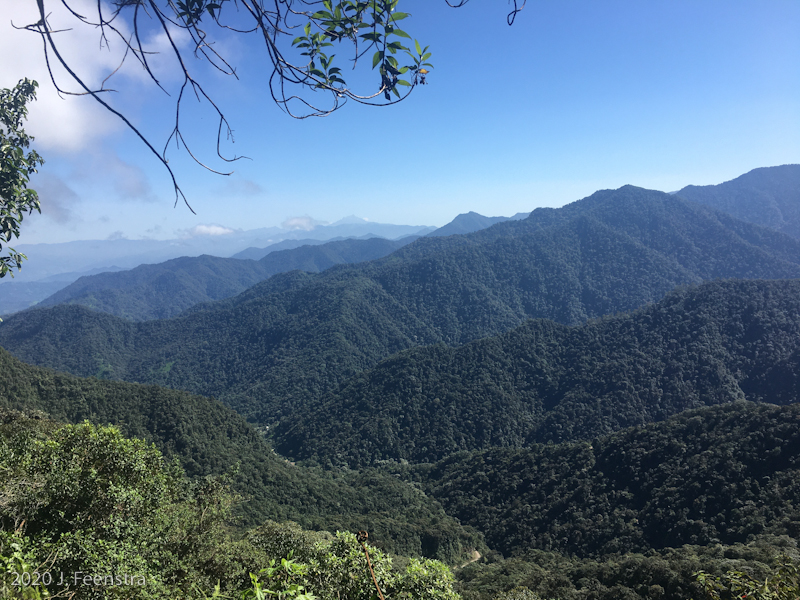
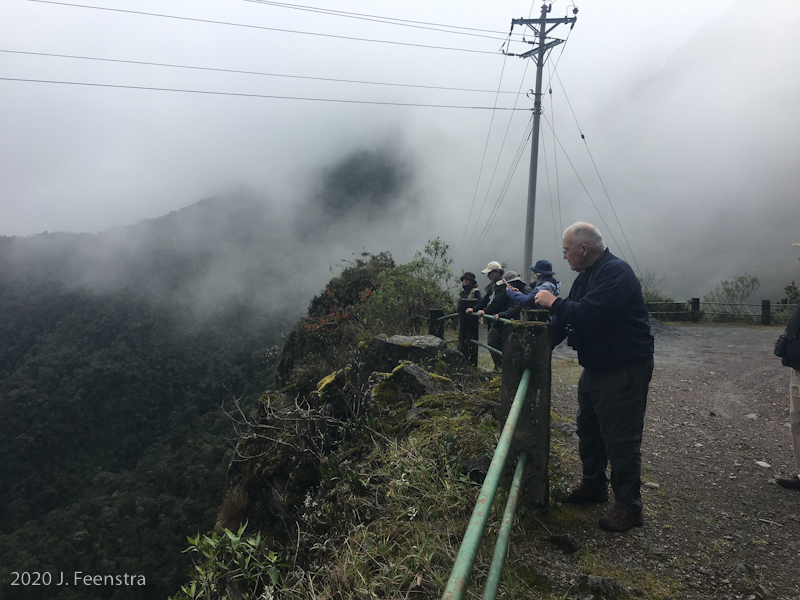
What a week! A good birding tour isn’t really about chasing around the rarest birds in the forest. It’s about going to places that are scenic, interesting, and exemplary of the habitat, and just going birding, letting the nature do its thing around you. And, sometimes, within that regular natural experience, those species that don’t get seen too often just happen to be there, too. That’s the way it seemed to go this week as we bumped around visiting forest at high elevations and low. There were the regulars like bizarre Toucan Barbets, spectacular Flame-faced Tanagers, comical Cinnamon Woodpecker, and impossibly cute Booted Racket-tails among the nearly three hundred species of birds we encountered. Plus, somehow, we also had the honor of sharing space with a Banded Ground-Cuckoo one morning, a Choco Vireo on a different morning, and a parade of other scarce and wonderful things nearly every day of the tour. All from home base in Mindo, and with, perhaps most amazing, warm sun and cloud-dappled, blue skies throughout.
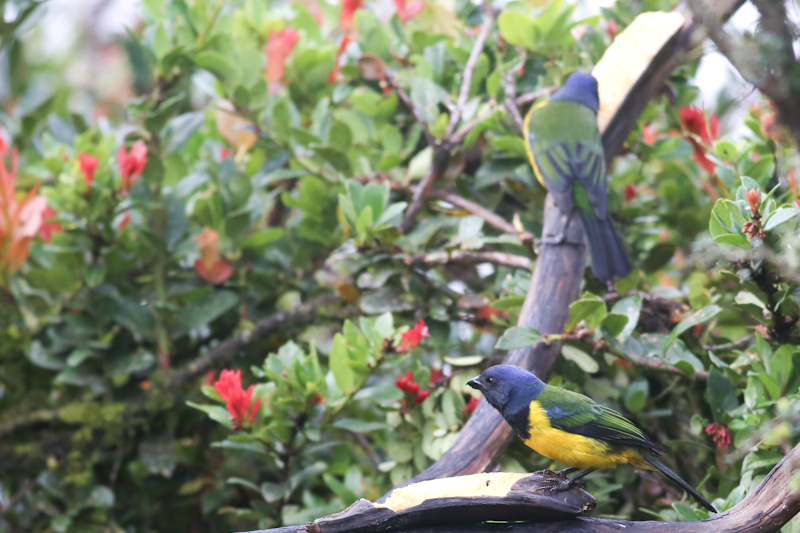
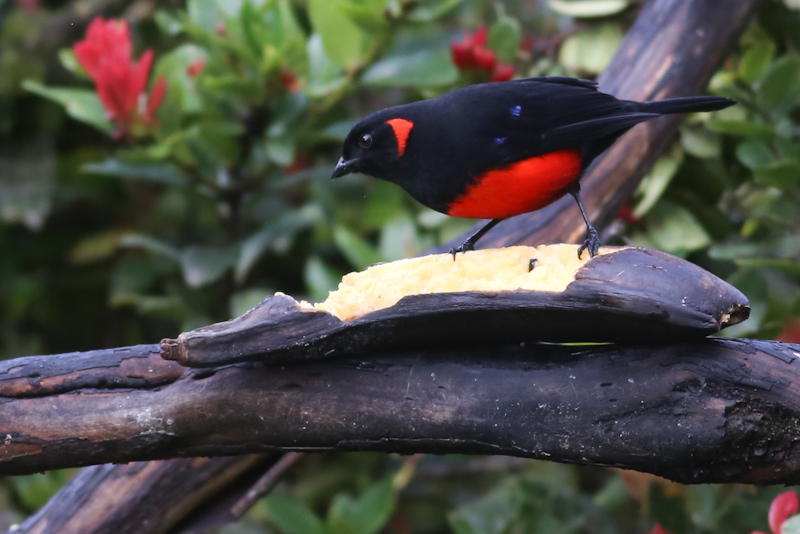
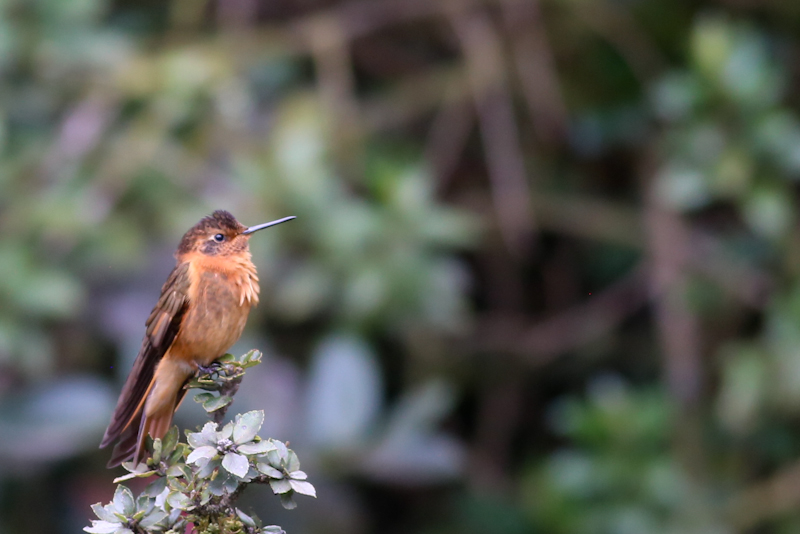
Though the tour officially started at the introductory dinner, early arrivers had a chance to poke around the grounds of our hotel near the airport and pick up a few “early birds.” Most of these were birds that are typical of the scrub and residential woodland that we wouldn’t be spending much time in once we got rolling, so those Scrub Tanagers, Blue-and-yellow Tanagers, and Black-tailed Trainbearers were pretty special. Then it really began. We started the next morning up high in the thick, elfin cloud forest of Reserva Yanacocha. The hummingbird feeders were doing fine, but those Shining Sunbeams (actually shining in the sun beams) were doing their best as aggressive security guards. Out on the trail we got to see a pair of Andean Guans clucking at us from the treetops as they ate passion flowers. In the clear skies we also found a pair of Aplomado Falcons. They were calling and landing on a cliff overhead, later strafing the feeders by the restaurant.
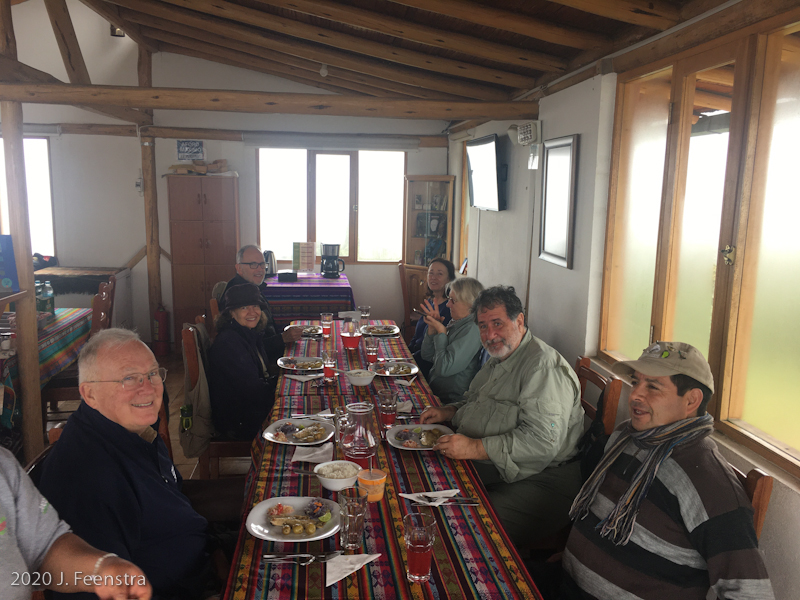

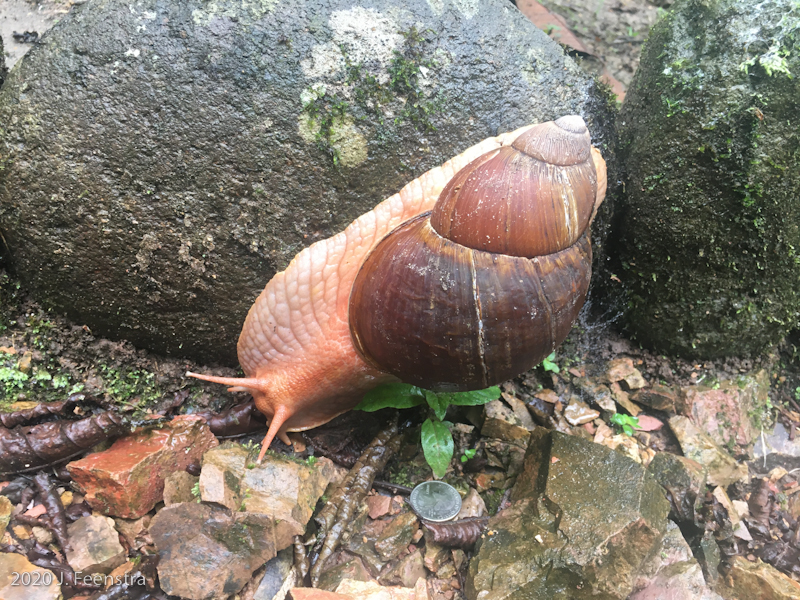
The bird storm was in full force on our second full day. We started pre-dawn in a private reserve where a lighted sheet had been stationed out in the forest to bring in a night’s worth of insects. It then brought in a morning’s worth of birds. It started with a couple of Rufous Motmots, then Zeledon’s and Chestnut-backed Antbirds joined in. A Scaly-throated Leaftosser strode through, picking up bugs, and tossing leaves. Foliage-gleaners and woodcreepers, Tawny-faced Gnatwrens, difficult forest birds all, came to the feast. Then, stalking in on the forest floor, came a Banded Ground-Cuckoo, the great beast of Choco rainforest birds. We watched it strut around, cock its tail, and leap onto the sheet to get a few juicy insects unconcerned with our gaping. And, just as nonchalantly, it walked off into the forest and back to its usual cuckoo business. Our way out of the forest was paused by an enormous Megalobulimus land snail in the trail. It would probably not even fit on a dinner plate. That was all before 9AM. The day continued with other fun stuff, like a Squirrel Cuckoo, normally the most spectacular cuckoo of the trip, perched up in a tree right in our hotel grounds. Feisty little Booted Racket-tails were zipping around the hummingbird feeders off the front driveway among thirteen other hummingbird species. And, a little further down the driveway, we caught a couple of male Club-winged Manakins displaying with their minor chords. Later in the afternoon we hit up a bird feeder station down the road that was pulling in some good things like both Blue-winged and Black-chinned Mountain-Tanagers, Red-headed Barbets, and a greedy red-tailed squirrel that kept carrying off the bananas!

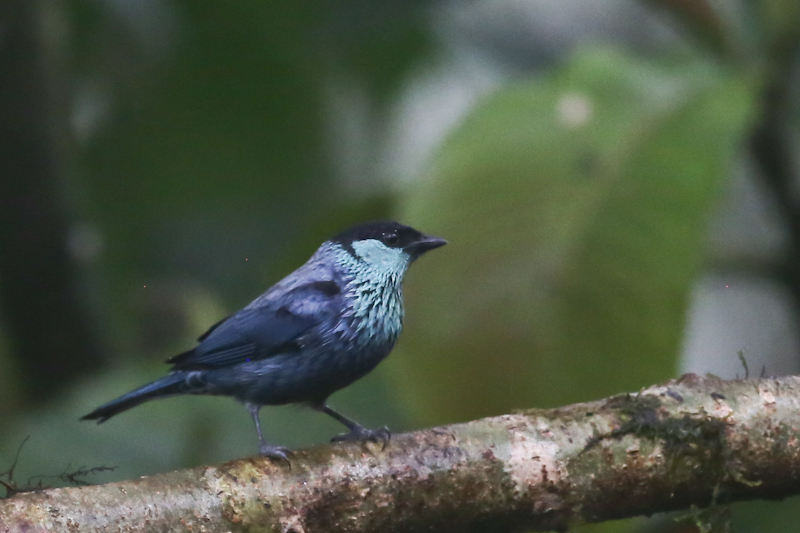
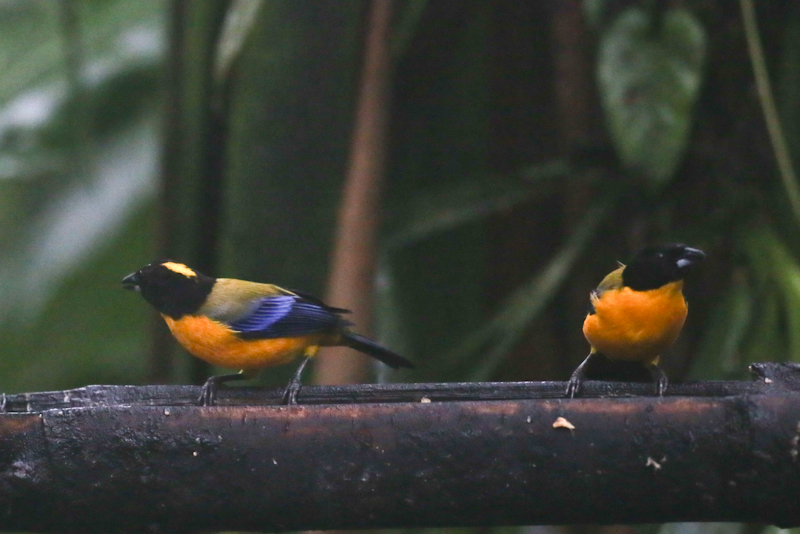
Then it was off to the lowlands. There weren’t any big flocks moving around, but we had a solid diversity of things, including several woodpeckers, of which we’d been sorely missing the previous days. Black-cheeked Woodpecker was attending a nest hole in the parking lot of the reserve we visited. A magnificent male Guayaquil Woodpecker was knocking away on a bamboo stalk off the road affording nice scope views. And, a delightful, bushy-headed Cinnamon Woodpecker bounced around between trees of the parking lot while we attempted eating our picnic lunch. Other good lowland things included a pair of Barred Puffbirds wolf-whistling to each other, and a male Blue-black Grassquit singing and dancing off the top of a cacao bush in one of the roadside orchards. Our cultural experience of the day came when we stopped for cold drinks in the afternoon on the way back to Mindo; we got to share space with a raucous birthday party for a lucky local eight-year-old. The hummingbirds didn’t seem to mind coming to the feeders between the music speakers and the face-painting clown.
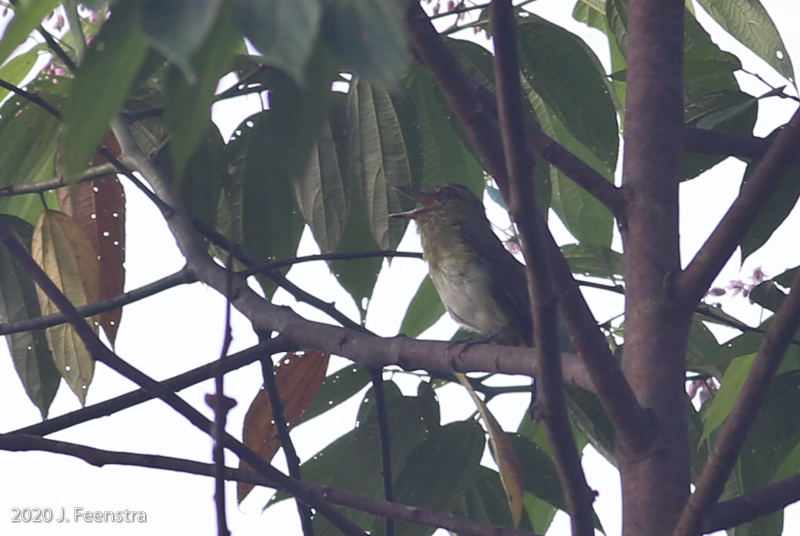

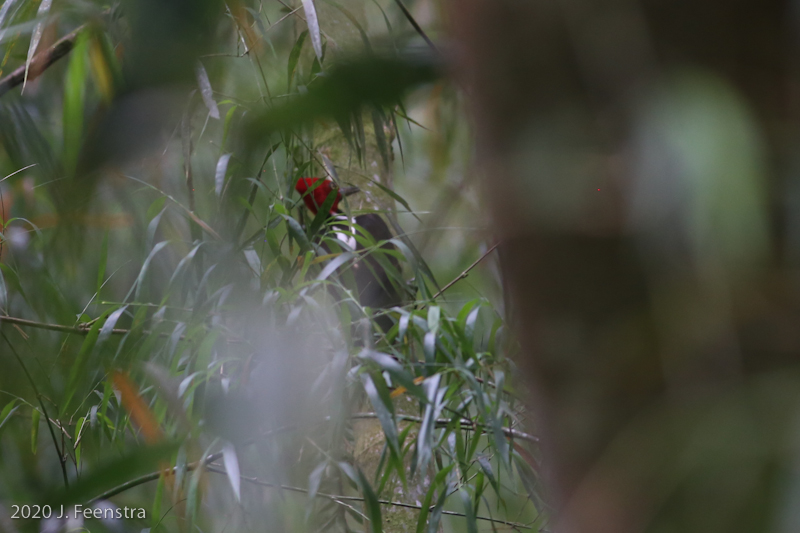
Then it was back up into the mountains. In the cool air of the higher elevation cloud forest we got to see one of the trip highlights (and cover bird of the field guide), a Plate-billed Mountain-Toucan showing off its many colors from the treetop. We also ran into some tanager flocks and found a couple of gaudy Grass-green Tanagers in all of their clashy, primary-colored finery. We spent a nice chunk of the afternoon on the back deck of Pacha Quindi chatting with the charming owners, Tony and Barbara, while streams of hummingbirds zoomed around us and tanagers picked berries off of the trees. Back at the lodge, naturally, we saw our first Golden-headed Quetzal perched in a tree over the driveway and making a few quick stealthy flights to snap up wary fruit.
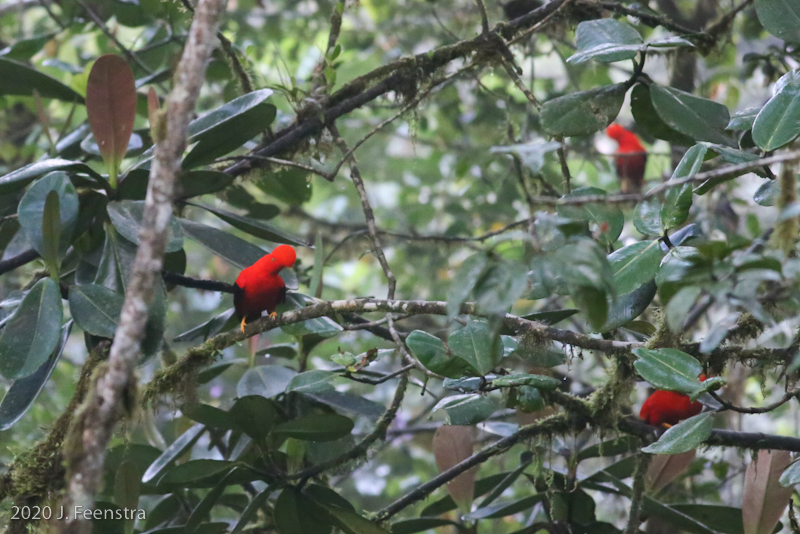
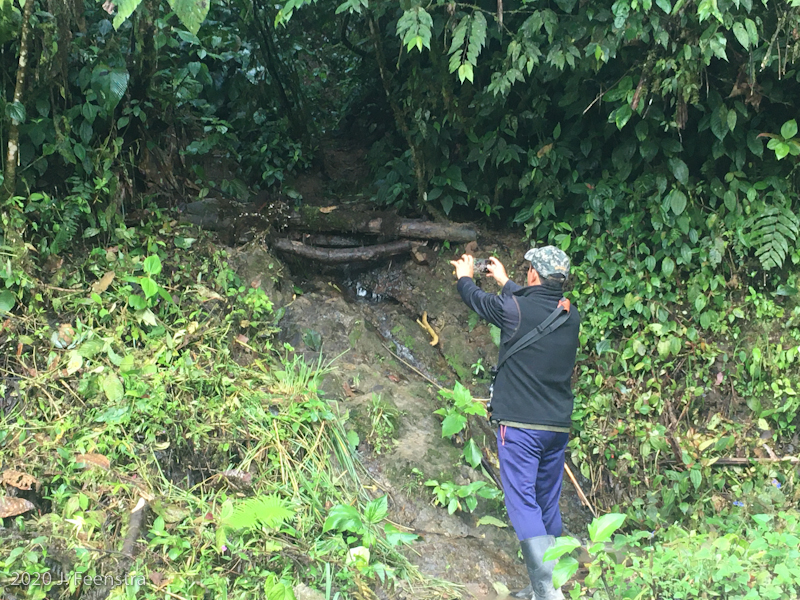
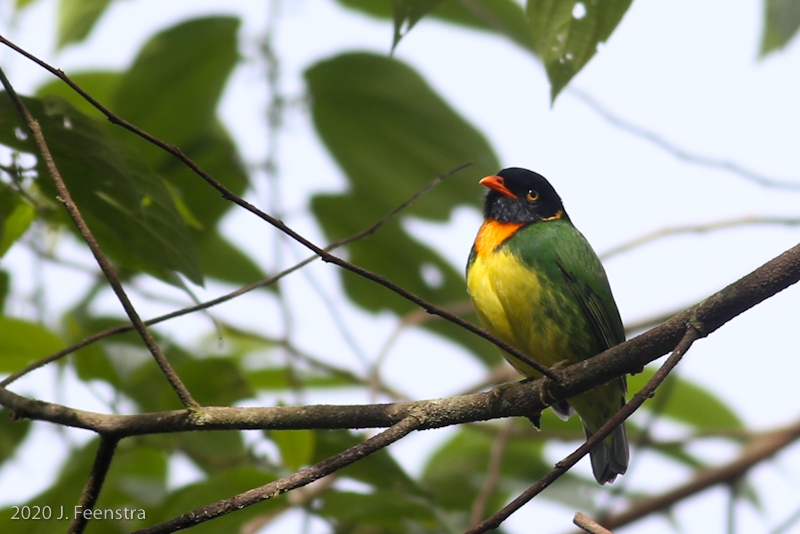
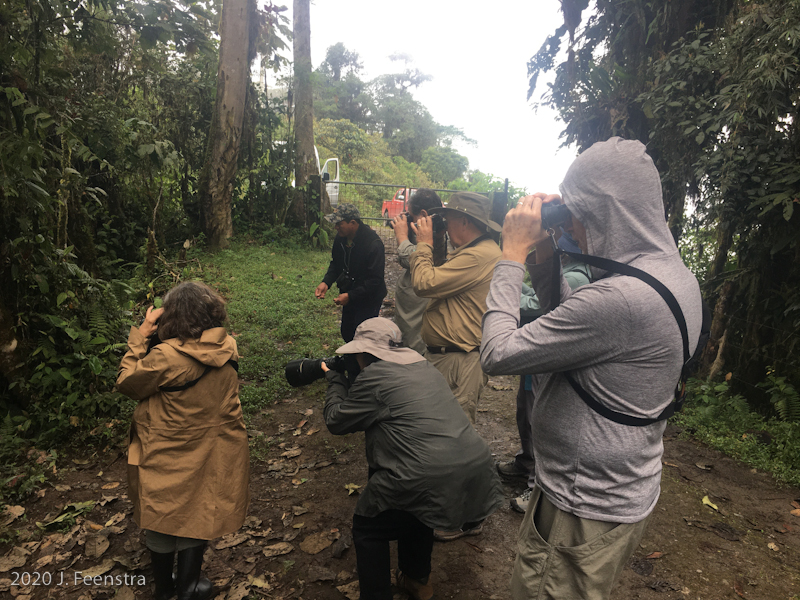
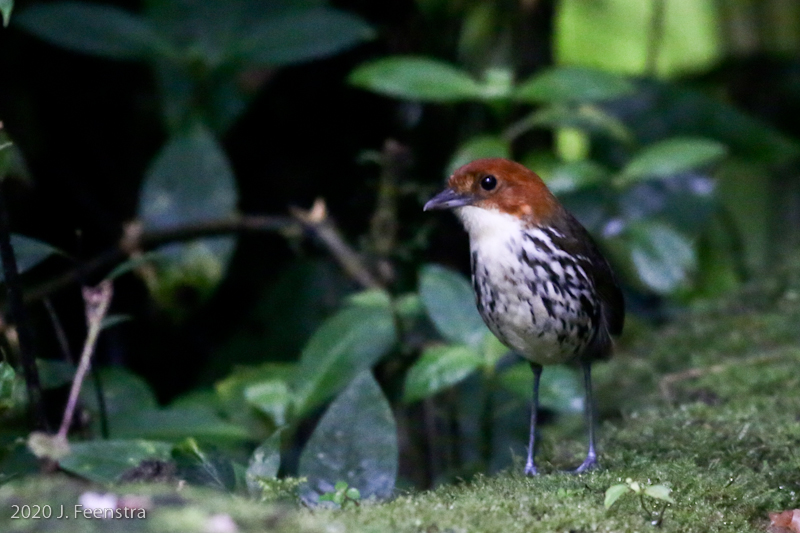
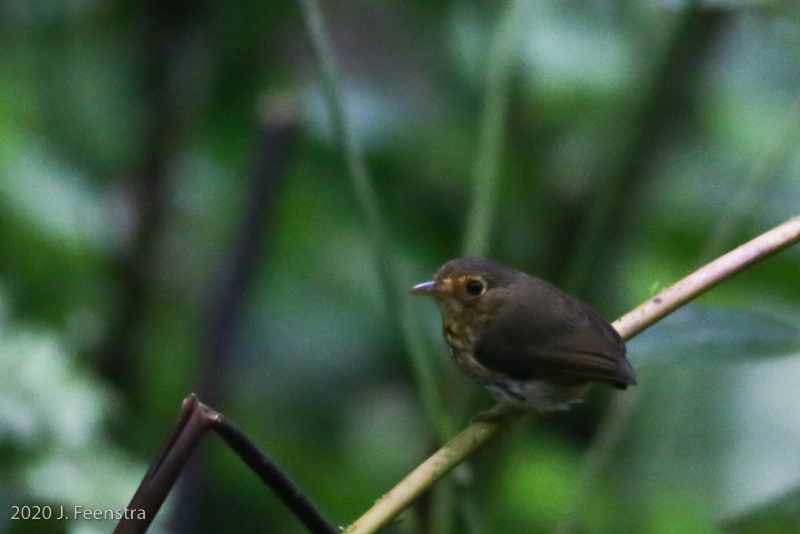
There is no complete northwest Ecuadorian experience without a visit to the farm of Angel Paz. The legendary farmer-turned birding celebrity had quite a show for us. It started in the pre-dawn as we watched male Andean Cocks-of-the-rock gather at their lek, bounce around, flap their wings, and release their grating screams. It continued with some nearly hand-fed Dark-backed Wood-Quail, a Yellow-breasted Antpitta, the striking a colorful Chestnut-crowned Antpitta, and a hip-shaking stumpy little Ochre-breasted Antpitta. Once the greedy squirrel was chased off of the bananas we got to enjoy our Andean breakfast of bolon, empanadas, and coffee while tanagers, Toucan Barbets, and brushfinshes had their food, too. In the trees nearby we also had great looks at an Orange-breasted Fruiteater, both an uncommon bird and a brilliant one. That afternoon we passed through Mindo town to bird along the rivers and pasture edges. Some highlights there included colossal Giant Cowbirds, a Little Cuckoo, Striated Heron, and at dusk the silhouette of an impossibly-proportioned Lyre-tailed Nightjar as it sallied out for insects against the moonlit sky.
The change in bird species from slight elevation change is a well-known feature of tropical diversity. Less obvious, though, is the change in species through even subtle changes in humidity caused by the extreme topography of Andean slopes. Our day in the Mashpi biodiversity area was our time to experience that effect. The elevation was much like that in Mindo, but with increased average humidity, the birds are quite different. Here we encountered some of the rarest of the rare like Choco Vireo and Rufous-brown Solitaire, as well as local specialties like the incredible, glowing Glistening-green Tanager, chattery little Rufous-throated Tanagers, and the somber Moss-backed Tanager. We were also able to get some looks at Bay Wren, heard nearly every day, yet seen only after a lot of work. Like much of the rest of this tour, it was uncharacteristically sunny. For many forest species this means quiet during the heat of the day, but the roosting Common Potoo we saw was doing anything but that: blinking its big yellow eyes, stretching its wings, and just soaking up the warm rays.
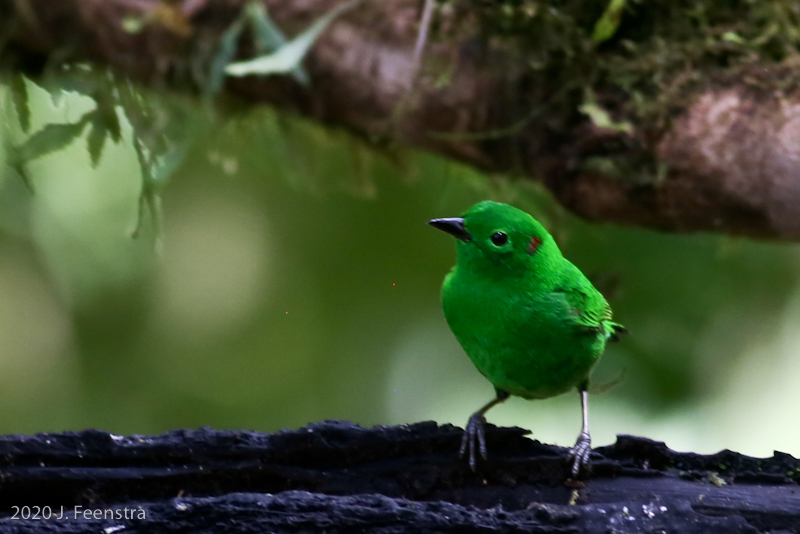
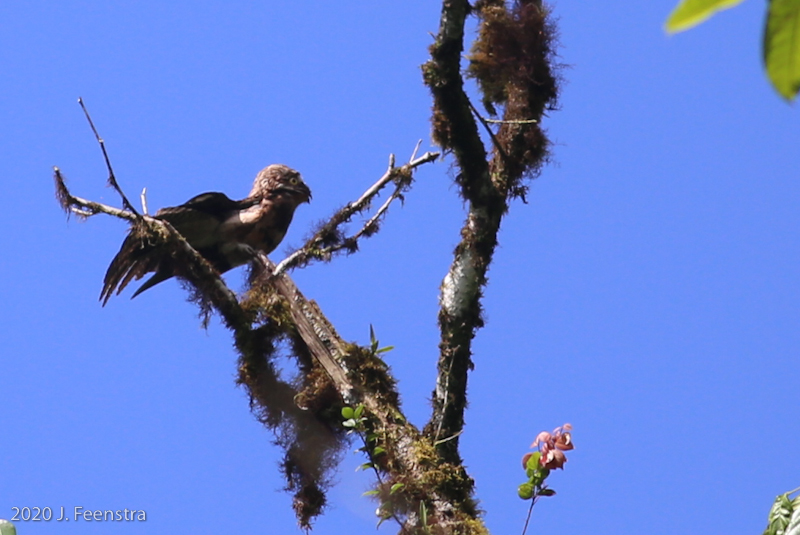
Our final day out was part transit back to Puembo, a little sightseeing, and more mountain birding. The upper cloud forests were really good to us this morning. We got more looks at some of the beautiful tanagers up there, plus some bushy-bearded Streaked Tuftedcheeks and a very cooperative Green-and-black Fruiteater. We also came across a pair of Powerful Woodpeckers, the female of which is a sublime black-and-white and made a spectacular flight passing us through the forest. We had lunch and then it was back into civilization. We made a quick stop at the old equator monument in the sleepy little square in the village of Calacali, another quick stop in some thorn scrub, one more at the atmospheric highway-side pond near the airport to get Slate-colored Coot for the trip, and a final one for the House Sparrows of Puembo central park, and we were back where we started ready to kick back after a birdy week.
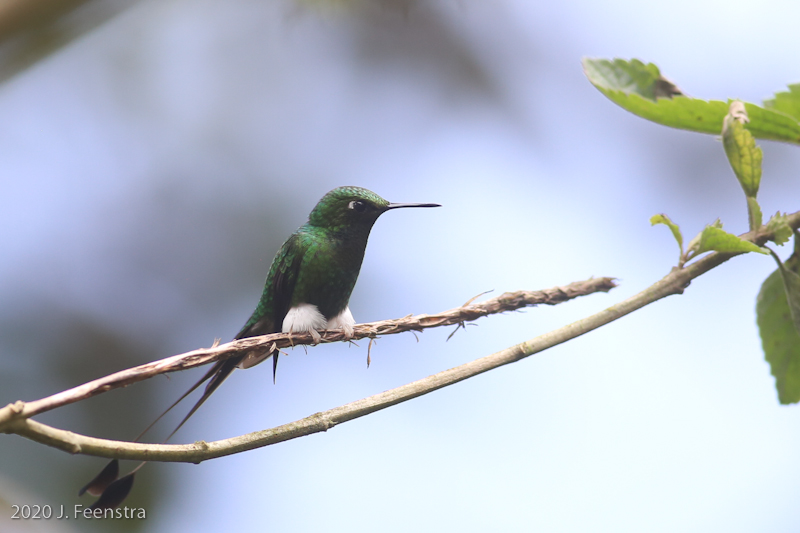
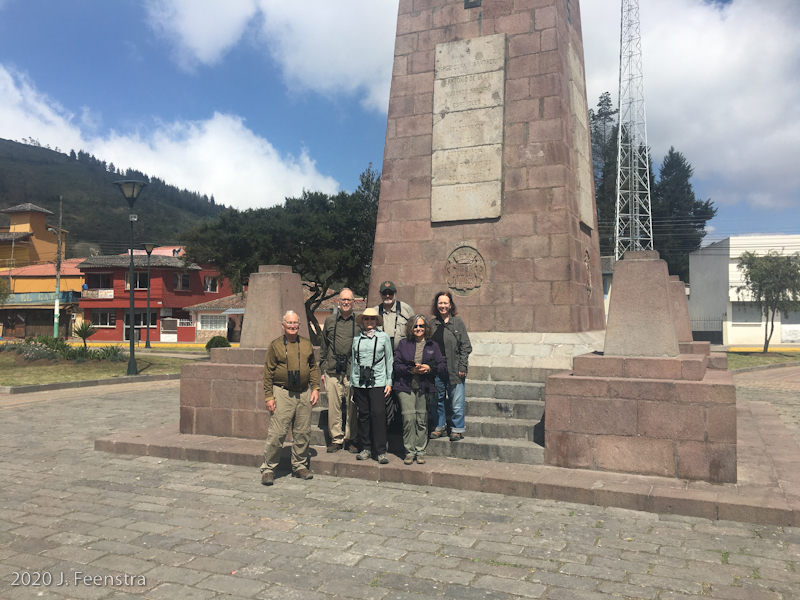
I took some photos of non-bird things along the way and sent them to iNaturalist. If you want to follow the identification process of those things, click here.
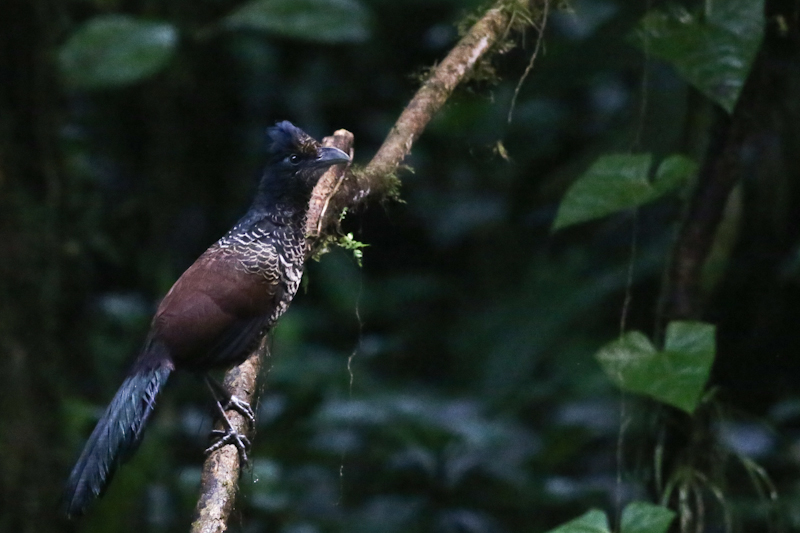
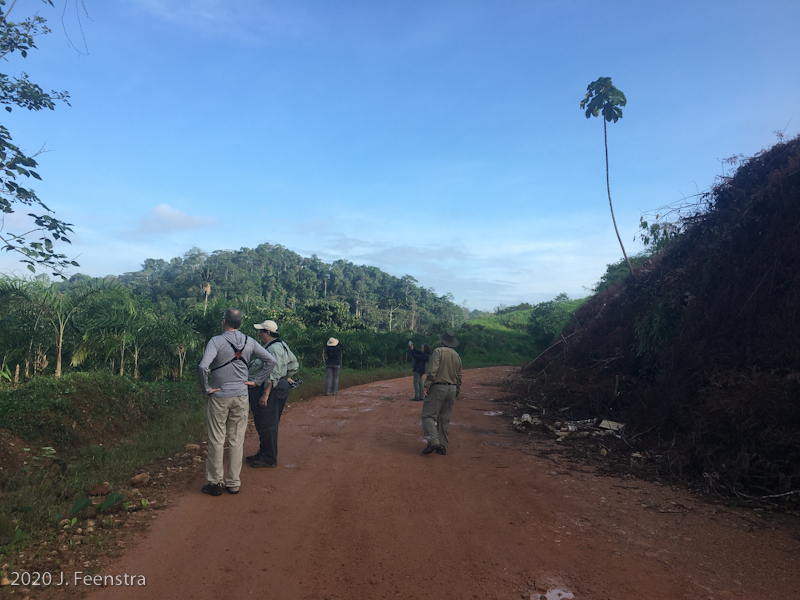
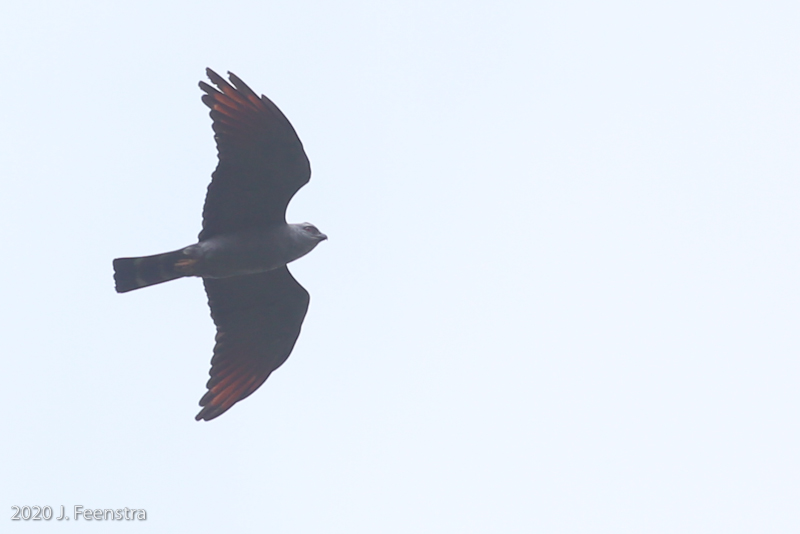
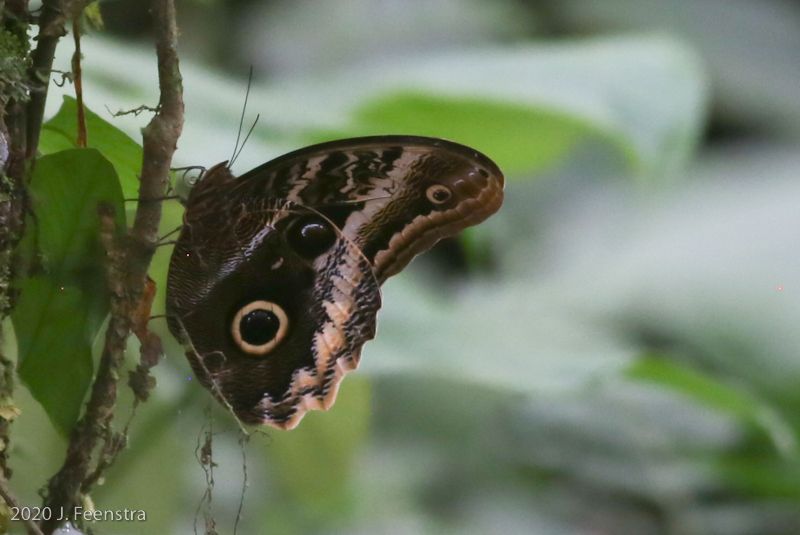
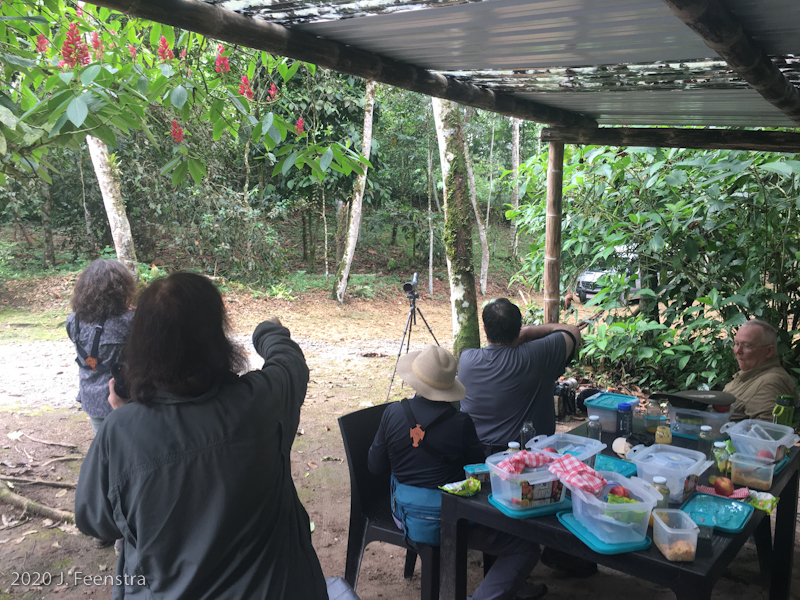
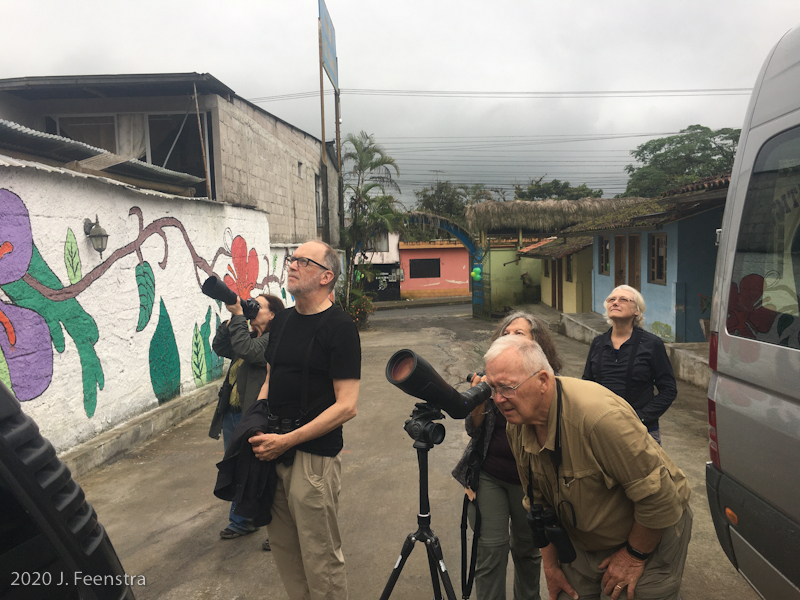
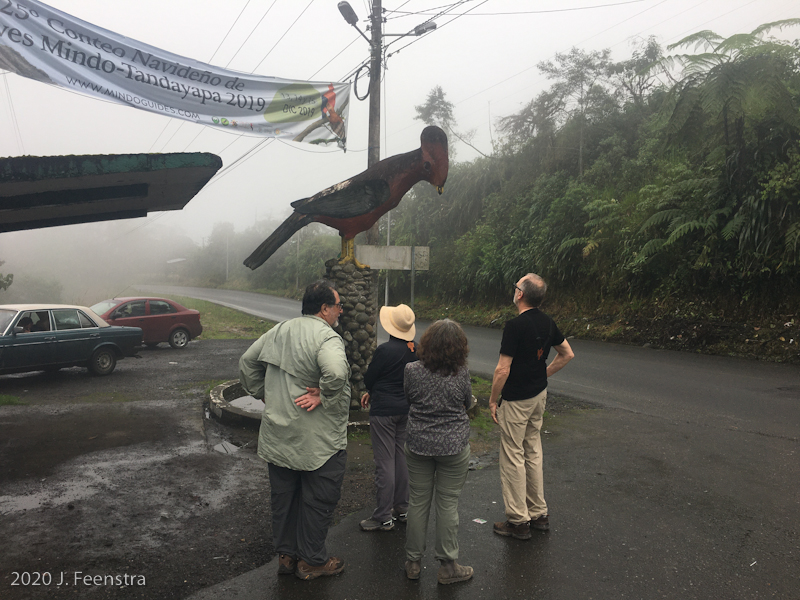

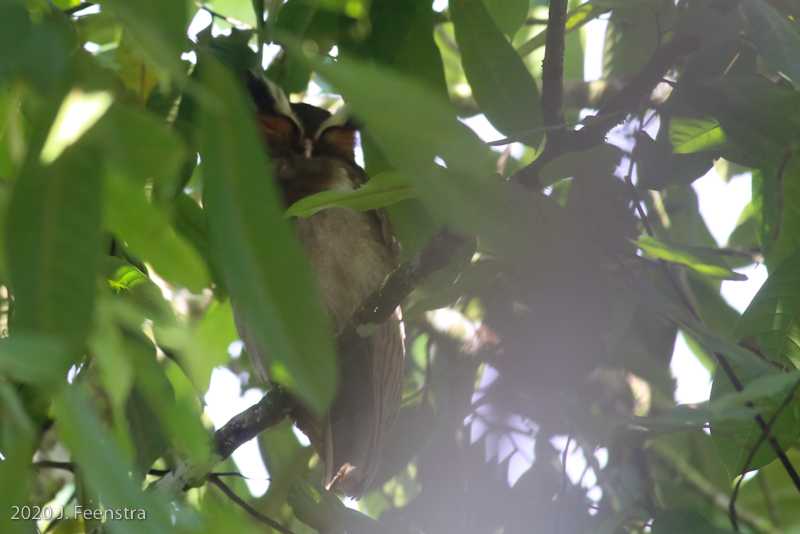
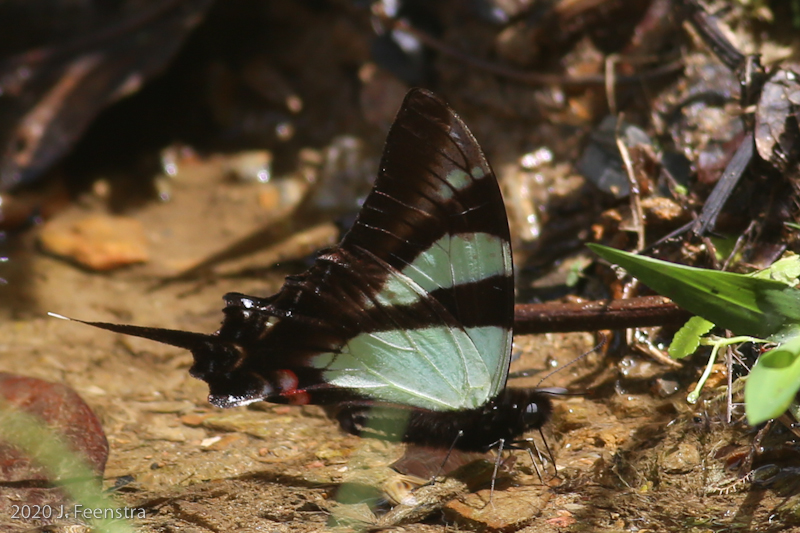
Wonderful write-up of our trip — brings back great memories!